Havanese vs Goldendoodle: A Comprehensive Comparison
Wondering about the Havanese vs Goldendoodle debate? You’re not alone. These dogs are both a draw for someone looking for a small, cute, low-shed pup.
The Havanese is a small dog breed that originated in Cuba and was developed as a companion dog. They are known for their silky, long fur and charming personalities. They are often registered with kennel clubs like the American Kennel Club and the Havanese Club of America.
Goldendoodle, on the other hand, is a hybrid breed that is a cross between a Golden Retriever and a Poodle. They can be registered with the American Canine Hybrid Club. They are known for their wavy if not hypoallergenic dog coats and friendly nature.
While both breeds have their unique traits, they are both good choices for families looking for a loving, loyal, and affectionate companion.
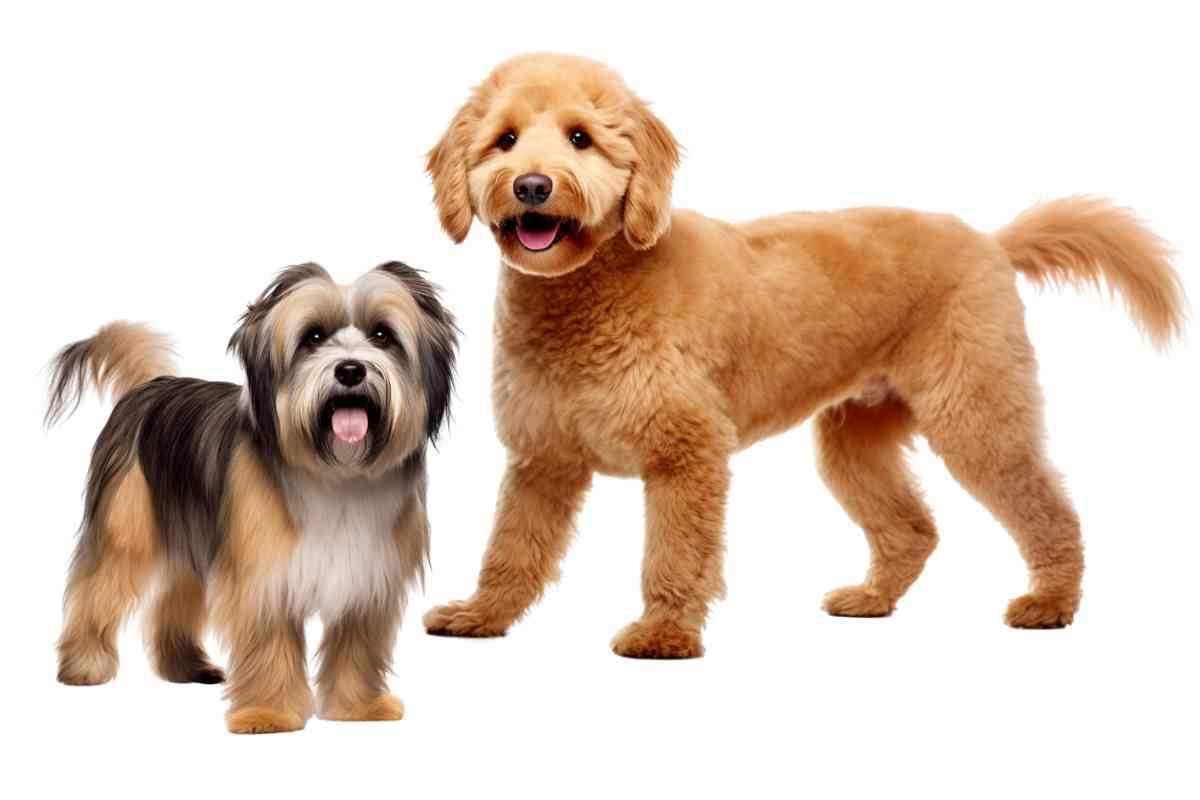
Havanese vs Goldendoodle
The Havanese is a small, purebred dog originating from Cuba, known for its long, silky, no-shed fur and social nature. It’s generally a healthy breed with a predictable size and regular brushing. On the other hand, the Goldendoodle is a larger, hybrid breed resulting from a cross between a Golden Retriever and a Poodle. It sheds from little to a lot and a more laid-back temperament.
From personality and trainability to health and exercise and everything in between, here’s what you need to know to compare the Havanese and Goldendoodle.
Curious about other options? See how the Maltipoo, Labradoodle, and Sheepadoodle compare.
Want an overview? Check out Types of Doodles: A Comprehensive Guide
Origins and History
The Havanese: A Purebred with Cuban Roots
The Havanese breed has a rich history that dates back to the 16th century. Originating from Cuba, this breed is actually the national dogs of Cuba. The Havanese descended from the Bichon Frise family of dogs, which were brought to Cuba by Spanish settlers. Over time, the breed adapted to the tropical climate of Cuba, resulting in its unique fur that serves as a protective barrier against the heat.
The Havanese quickly became a favorite among Cuban aristocrats and was often found lounging in the luxurious homes of the elite. Despite its early popularity, the breed faced near extinction during the Cuban Revolution. Thankfully, a few were smuggled into the United States, where dedicated breeders worked to revive the breed.

The Goldendoodle: A Hybrid for the Modern Age
In contrast, the Goldendoodle is a relatively new breed that came into existence in the 1990s. This hybrid breed is a cross between a Golden Retriever and a Poodle, combining the best traits of both breeds. The aim was to create a therapy dog that possessed the friendly and reliable nature of a Golden Retriever, along with the hypoallergenic fur of a Poodle.
The Goldendoodle quickly gained popularity, especially among families and individuals with allergies. Unlike the Havanese, which has a long-established standard due to its purebred status, the Goldendoodle is still evolving, with breeders continually working to perfect its characteristics.
Purebred vs. Hybrid: The Key Differences
One of the most significant differences between the two breeds is their lineage. The Havanese is a purebred dog, meaning it has a long history and established characteristics that have been refined over centuries.
On the other hand, the Goldendoodle is a hybrid, resulting from the intentional crossbreeding of two different breeds. This gives the Goldendoodle a wider range of characteristics, making each dog unique in its own way.

Size Matters: The Predictable Havanese vs. The Variable Goldendoodle
When it comes to selecting the perfect canine companion, size is often a significant factor to consider. Whether you live in a sprawling suburban home or a cozy city apartment, the size of your dog can impact not only your living situation but also your lifestyle.
The Havanese: Small but Mighty
The Havanese is a small breed, typically weighing between 7 to 13 pounds and standing at a height of 8.5 to 11.5 inches. This compact size makes the Havanese an ideal choice for apartment dwellers or those with limited space.
One of the advantages of opting for a purebred like the Havanese is the predictability in size. Because the Havanese is a purebred, it has been bred for specific traits over many generations, including its size. This means that if you’re getting a Havanese puppy, you can be fairly certain about how large the dog will grow to be, based on its parents and breed standards.
The Goldendoodle: A Range of Possibilities
The Goldendoodle, on the other hand, can vary widely in size, primarily because it is a hybrid breed. Goldendoodles can be categorized into three main sizes: mini, medium, and standard.
The mini Goldendoodle can weigh as little as 15 pounds and stand about 13 to 20 inches tall. Medium Goldendoodles can weigh up to 45 pounds and reach a height of 21 to 24 inches, while standard Goldendoodles can weigh over 45 pounds and stand 20 to 24 inches tall.
The reason for this variability in size is due to the genetic diversity that comes from crossbreeding a Golden Retriever with a Poodle. Depending on which traits the Goldendoodle inherits, its size can be less predictable than that of a purebred.
Additionally, because the breed is still evolving, there is less of a standardized size range for the Goldendoodle compared to established purebreds like the Havanese.
Why Predictability May Matter
For potential dog owners, the predictability in size can be crucial. If you have specific space limitations or lifestyle needs, the Havanese offers a more predictable outcome.
With a Goldendoodle, you may need to be prepared for a wider range of possibilities, which could be either an exciting prospect or a complicating factor, depending on your perspective.
A Palette of Possibilities: Contrasting the Coats and Colors of Goldendoodles and Havanese
When it comes to choosing a dog, appearance isn’t everything, but it certainly plays a role. The coat type and color of your future furry friend can influence not only how they look but also how much grooming they’ll require and even how well they’ll fit with your lifestyle.
The Havanese: A Rainbow of Options
The Havanese breed is known for its luxurious, silky coat that ranges from wavy to curly. One of the most captivating aspects of the Havanese is the sheer variety of colors and patterns they come in.
From black, white, and cream to gold, blue, and chocolate, the Havanese offers a veritable rainbow of options. They can also have a variety of markings and patterns, including brindle, sable, and even a “parti-color” coat, which features large patches of different colors.

Interestingly, the coat of a Havanese can change as they age. A puppy born with a dark coat may lighten over time, adding another layer of complexity to this already diverse breed.
Despite its luxurious appearance, the Havanese coat is surprisingly low-maintenance, requiring only regular brushing to prevent matting. It’s also a “no-shed” coat, making it a good option for those with allergies.
The Goldendoodle: A Blend of Textures and Tones
The Goldendoodle’s coat is a fascinating blend of its parent breeds—the Golden Retriever and the Poodle. This hybrid can inherit any color or pattern that Poodles have, including black, white, gray, and various shades of cream, apricot, and red.
However, Goldendoodles are most commonly bred with red or apricot Poodles, resulting in the golden tones that many people associate with this breed.
When it comes to texture, the Goldendoodle’s coat can vary widely. It can range from the shedding coat of the Golden Retriever to the curly, hypoallergenic coat of the Poodle. Most Goldendoodles have a wavy coat that sheds slightly, offering a middle ground between the two parent breeds.
The Tale of Two Coats
While both breeds offer a range of colors, the predictability and maintenance of their coats differ significantly. The Havanese, with its no-shed, wavy to curly coat, offers a hypoallergenic option that stays relatively consistent as the dog ages.
The Goldendoodle, on the other hand, can be a bit of a wild card. Its coat can range from shedding to hypoallergenic and may require more frequent grooming depending on the texture.
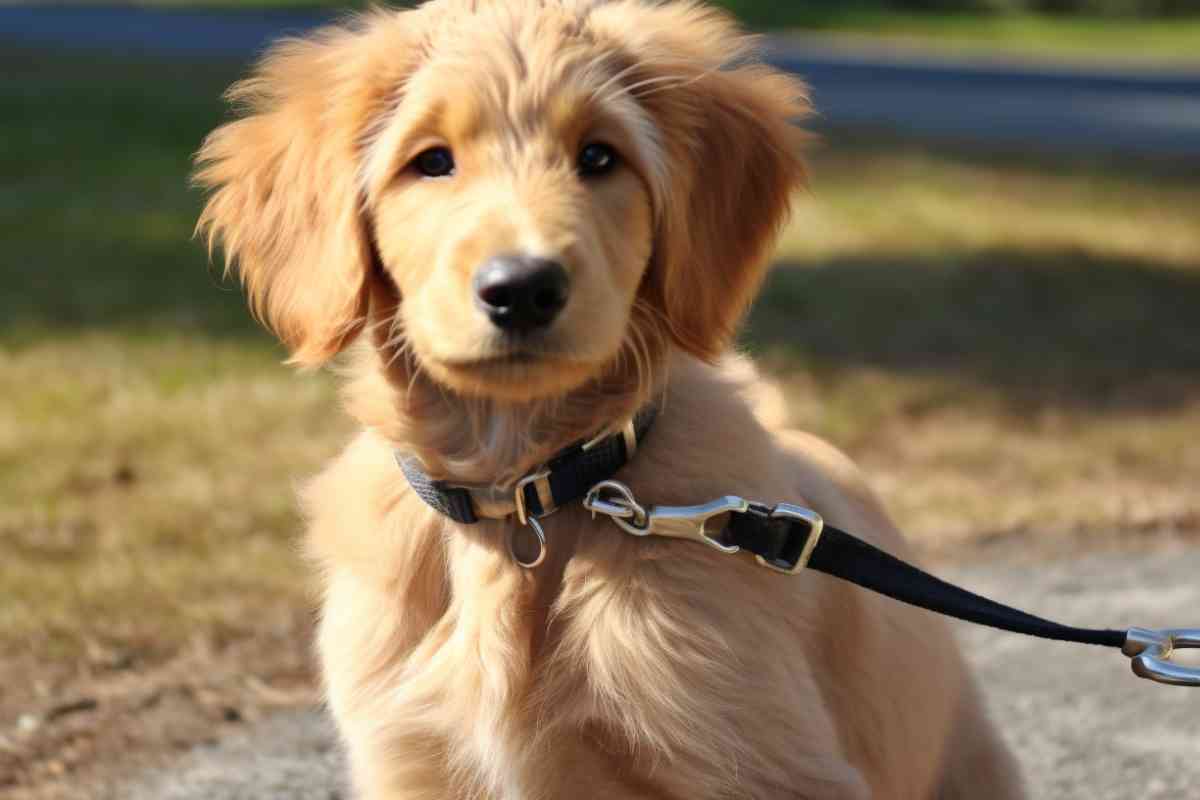
Havanese vs Goldendoodle: Temperament and Personality
When choosing a dog, temperament and personality are often as important—if not more so—than physical characteristics. After all, you’re bringing a new member into your family, and you want to ensure that their personality meshes well with your lifestyle and household. From the lap of luxury to the rugged island life, and from affable excitement to sensitive introspection, these breeds offer a wide range of personalities.
The Havanese: A Luxurious Islander with a Streak of Independence
The Havanese is a breed of contrasts. On one hand, they have a history of being pampered by Cuban aristocrats, often found lounging in opulent settings. This luxurious past has given them a taste for affection and companionship, making them excellent lap dogs who love to be spoiled.
However, don’t let their royal demeanor fool you. The Havanese is also a rough-and-tumble island dog at heart. Originating from Cuba, they had to be adaptable and independent to thrive in various conditions.
This dual nature makes the Havanese incredibly versatile. They are just as happy exploring the outdoors as they are cuddling on the couch. Their independent streak also means they’re generally easy to train, but it may require a bit of motivation—like treats or toys—to get them to follow commands consistently.
The Goldendoodle: A Spectrum of Sensitivity and Excitability
The Goldendoodle is a hybrid breed, inheriting traits from both the Golden Retriever and the Poodle. This mix results in a wide range of possible temperaments.
On one end of the spectrum, you have the affable, excitable nature of the Golden Retriever. These Goldendoodles are often outgoing, social, and eager to please—making them excellent family pets and wonderful with children.
On the other end, you have the more sensitive, introspective personality of the Poodle. These Goldendoodles may be a bit more reserved and could require a more gentle approach to training and socialization.
They are often highly intelligent and can be a bit more selective in their interactions, making them well-suited for people who appreciate a more thoughtful canine companion.
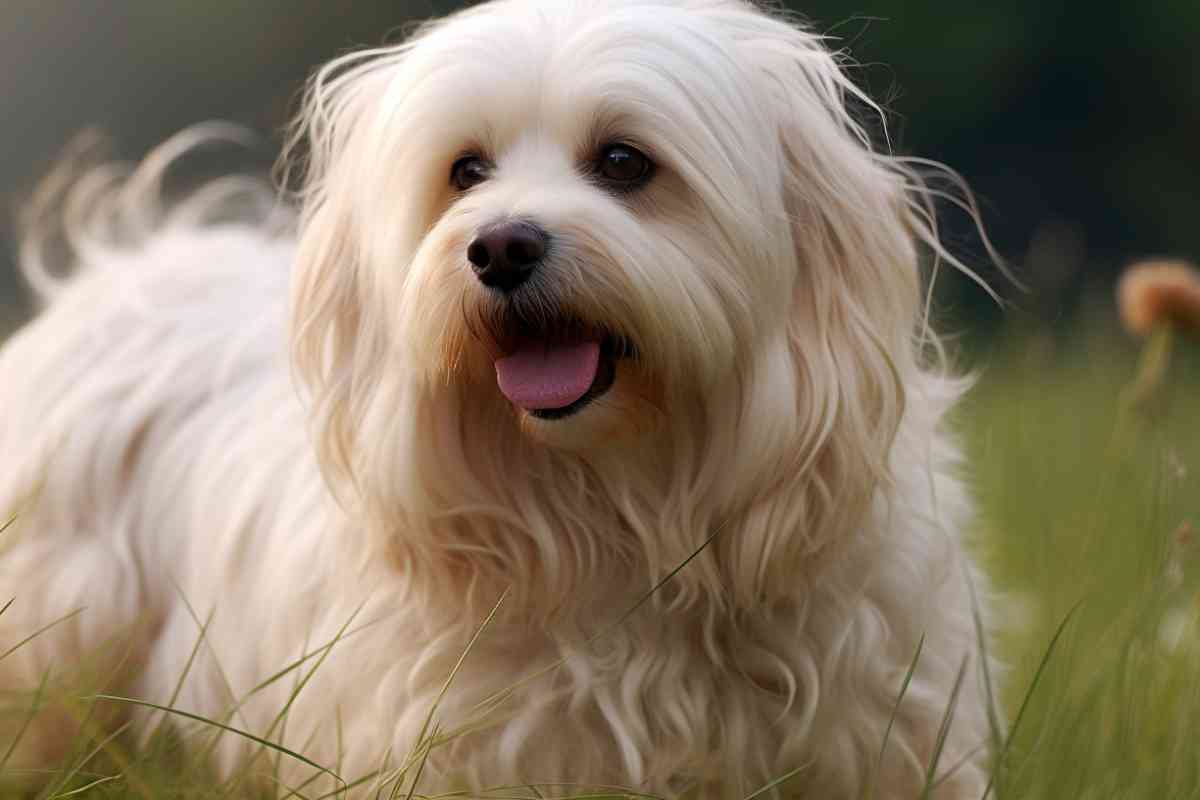
The Best of Both Worlds?
While the Havanese offers a blend of independence and a love for luxury, the Goldendoodle provides a range of temperaments that can fit a variety of lifestyles.
Whether you’re looking for a dog that’s happy to be the center of attention or one that’s content with quiet companionship, both breeds offer compelling options.
The Learning Curve: Contrasting the Trainability of Havanese and Goldendoodles
A dog’s ability to learn commands, adapt to various situations, and coexist peacefully with humans and other pets can make a significant difference in your overall experience as a pet owner.
The Havanese: Independent Yet Eager to Please
The Havanese is a breed that combines independence with a strong desire to please its owners, making it a generally trainable dog. Originating from Cuba, where adaptability was key to survival, the Havanese has an innate ability to adjust to different situations.
This makes them relatively easy to train in various environments, whether you’re teaching basic commands or more complex tricks.
However, their independent streak means that they may sometimes choose to do things their own way. While they are quick learners, they may require a bit of extra motivation to follow through on commands consistently.
Treats, toys, and positive reinforcement are often effective ways to capture their attention and encourage compliance. Their intelligence and curiosity make them quick to pick up new skills, but it’s essential to keep training sessions engaging to hold their interest.
The Goldendoodle: A Spectrum of Trainability
The Goldendoodle’s trainability can vary widely due to its hybrid nature, inheriting traits from both the Golden Retriever and the Poodle. Golden Retrievers are known for their eagerness to please and are generally easy to train, making them popular choices for service and therapy work.
Poodles are highly intelligent and can also be easy to train, but they may be more sensitive and reactive.
Most Goldendoodles fall somewhere in between, displaying a mix of eagerness to please and intelligent sensitivity. They often excel in obedience training and can learn a wide range of commands and tricks.

However, the level of ease in training a Goldendoodle can depend on which traits they inherit more strongly from their parent breeds. Some may require more consistent reinforcement and a structured training environment, while others may pick up commands with minimal effort.
The Bottom Line: Know Your Dog
Both the Havanese and the Goldendoodle offer a range of trainability, with each breed bringing its own set of challenges and rewards to the training table. The Havanese may require a bit more motivation to overcome their independent nature, while the Goldendoodle’s trainability can vary depending on its genetic makeup.
Contrasting the Health Profiles of Havanese and Goldendoodles
Havanese and Goldendoodle tend to be healthy, but they do have some distinct health problems. While Havanese are prone to deafness and eye disorders, Goldendoodle dogs can inherit hip problems or luxating patellas from either parent. Here’s a deep dive into the health of both breeds.
Havanese: A Generally Healthy Breed with Some Concerns
Common Health Issues in Havanese
The Havanese is generally considered a healthy breed, but like all breeds, they are prone to certain health conditions. Some of the most common issues include:
- Hip Dysplasia: A malformation of the hip joint that can lead to arthritis.
- Legg-Calvé-Perthes Disease: A condition affecting the hip joint, often requiring surgery.
- Cataracts: Clouding of the eye lens, which can impair vision.
- Patellar Luxation: A condition where the kneecap dislocates or moves out of its normal location.
- Chondrodysplasia: A genetic disorder affecting the development of cartilage, leading to dwarfism.
- Deafness and blindness. Some Havanese are born deaf, blind, or both, even if they’re well-bred.
While these conditions are not guaranteed to occur in every Havanese, it’s essential to be aware of them and to choose a reputable breeder who tests for these issues.
Goldendoodles: The Impact of Hybrid Vigor
Common Health Issues in Goldendoodles
Goldendoodles are susceptible to a range of health issues inherited from both the Golden Retriever and the Poodle parent breeds. Some of the most common health concerns include:
- Hip Dysplasia: Similar to the Havanese, this condition affects the hip joint.
- Elbow Dysplasia: A condition affecting the elbow joint, leading to arthritis or lameness.
- Progressive Retinal Atrophy (PRA): A degenerative eye disorder.
- Von Willebrand’s Disease: A blood clotting disorder.
- Addison’s Disease: A hormonal disorder affecting the adrenal glands.
The Concept of Hybrid Vigor
One advantage that first-generation Goldendoodles have is the concept of “hybrid vigor.” This term refers to the phenomenon where hybrid offspring exhibit better health and vitality than their purebred parents.

However, it’s essential to note that this advantage decreases in subsequent generations of Goldendoodles. As Goldendoodles are bred with other Goldendoodles or backcrossed with Poodles or Golden Retrievers, the benefits of hybrid vigor can diminish, making later generations more susceptible to the inherited health issues of the parent breeds.
A Tale of Two Exercise Regimens: Goldendoodles vs. Havanese
Goldendoodles: Energetic, Versatile, and Social
Exercise Requirements for Goldendoodles
Goldendoodles are energetic dogs that require a moderate to high level of exercise, typically around 30 to 60 minutes per day. This can include walks, runs, or playtime in the yard.
However, it’s not just about physical exercise; Goldendoodles also crave mental stimulation and human interaction.
The Need for Human Guidance and Entertainment
Inherited from both parent breeds but especially prominent from the Poodle side, Goldendoodles often look to their human companions for guidance and entertainment. Activities like fetch, agility courses, or even puzzle toys are excellent ways to engage their minds and strengthen your bond with them.
Their social nature makes them more reliant on human interaction for their exercise and entertainment, making them a great fit for active families who can provide that level of engagement.
Havanese: Moderate Exercise with a Streak of Independence
Exercise Requirements for Havanese
The Havanese is more moderate in its exercise needs, requiring around 20 to 30 minutes of physical activity per day. This can include short walks and interactive games like tug-of-war or fetch.
While they enjoy playtime and human interaction, they are also quite capable of entertaining themselves.

The Independent Entertainer
One of the unique traits of the Havanese is their ability to entertain themselves much of the time. Whether it’s exploring the yard, playing with toys, or simply watching the world go by from a window, the Havanese is more independent in its entertainment needs compared to the Goldendoodle.
This makes them a good fit for individuals or families who may not always have the time for extended play sessions but still want a playful and affectionate pet.
Matching Your Lifestyle to Your Dog’s Needs
Understanding your potential pet’s exercise and entertainment needs is crucial for a harmonious relationship. If you lead an active lifestyle and enjoy engaging with your dog both physically and mentally, a Goldendoodle may be the perfect companion.
On the other hand, if you’re looking for a more independent pet that still enjoys playtime but doesn’t require constant human interaction, the Havanese could be a better fit.
Social Interactions and Friendliness
A dog’s social nature can significantly impact your family dynamics, social activities, and even your interactions with strangers. Whether you’re in search of a social butterfly or a more discerning companion, understanding these nuances can guide you to the perfect match.
Goldendoodles: The Social Chameleons
A Range of Social Traits
Goldendoodles are generally known for their friendly and social nature, a trait they inherit from their Golden Retriever parents. However, it’s essential to note that their friendliness can range from the “love-everybody” disposition of the Golden Retriever to the more suspicious and protective nature of the Poodle.
Family and Stranger Dynamics
While most Goldendoodles are excellent with families and even strangers, those that lean more towards their Poodle heritage may be a bit more reserved and protective.
This means that some Goldendoodles might take a little time to warm up to new people or may be more alert in guarding their home. Despite this, they are generally affectionate and form strong bonds with their families.
Havanese: The Friendly but Discerning Companions
A Balanced Approach to Socialization
The Havanese are generally friendly dogs but tend to be more reserved compared to the often exuberant Goldendoodle.
They are affectionate with their families and often form a special bond with one or two individuals. While they are usually good around strangers, they may take some time to warm up.
Adapting to Social Environments
The Havanese are highly adaptable and can adjust their level of friendliness to suit different social settings. Whether you live alone or have a bustling household, the Havanese can fit well into various social scenarios, including interactions with other pets.
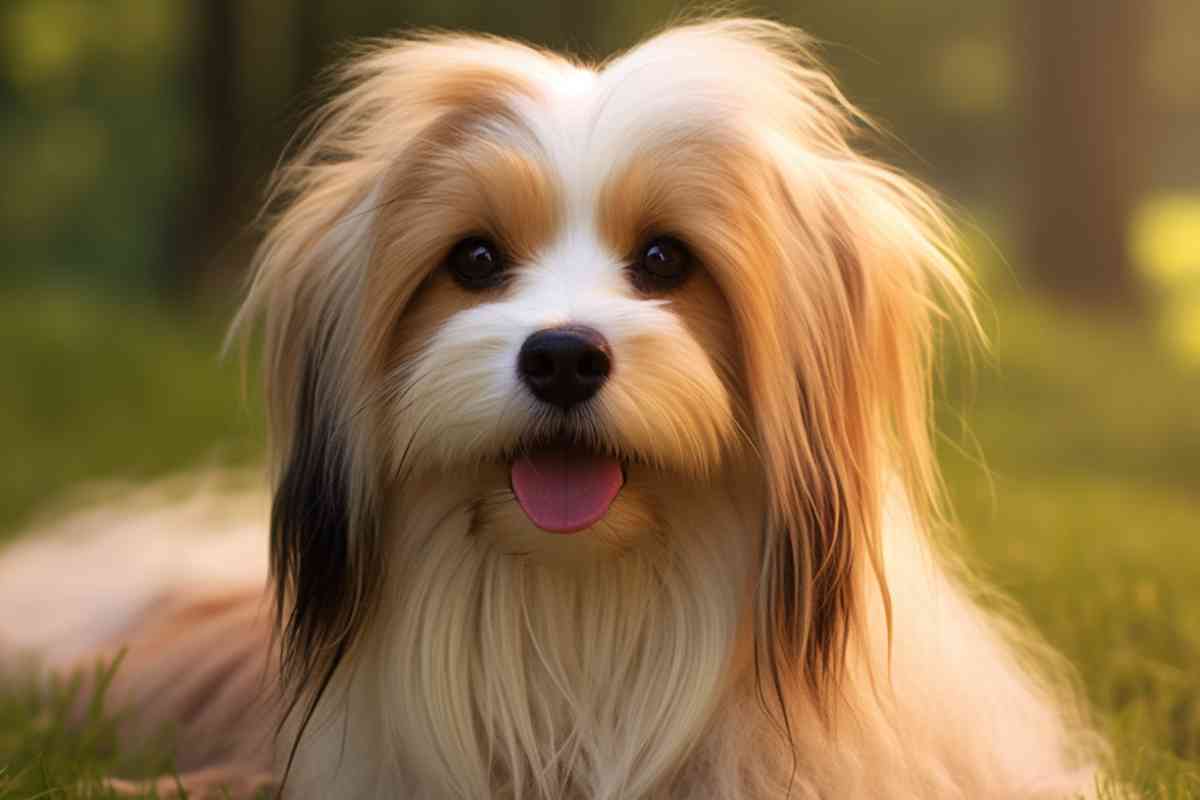
Choosing the Right Social Fit for You
If you’re looking for a dog that is generally friendly and loves meeting new people but can also be protective when needed, a Goldendoodle might be the right fit. However, if you prefer a dog that is friendly but more discerning in its social interactions, the Havanese could be a better match.
The Cost of Companionship: Contrasting the Price and Availability of Goldendoodles and Havanese
Havanese: A Premium for Purebred Pedigree
The Cost Factor
As a purebred dog, well-bred Havanese can come with a hefty price tag. The cost of a Havanese puppy can vary widely, depending on factors such as breeding, show history, and lineage. Prices can range from $1,000 to over $3,000, making them a more expensive option for many prospective dog owners.
Availability and Scarcity
Another factor that can drive up the price of a Havanese is their availability. They can be difficult to find, especially if you’re looking for a dog with a specific lineage or show history. This scarcity often leads to higher demand, which in turn increases the price.
Goldendoodles: Abundant but Beware of Risks
The Cost Factor
Goldendoodles are generally more readily available compared to the Havanese, and their prices can vary significantly. While you can find Goldendoodles for as low as $500, it’s crucial to be cautious.
The lower end of the price spectrum often involves risks such as puppy mills and backyard breeders.
The Risks of Hybrid Popularity
Because Goldendoodles are not a breed but a hybrid, they have become a target for unethical breeding practices.
Puppy mills and backyard breeders often produce Goldendoodles without regard for health or temperament, leading to potential long-term issues for the dog and owner alike.
Due Diligence: Meeting the Parents and Seeing the Environment
Regardless of whether you’re considering a Havanese or a Goldendoodle, it’s essential to insist on seeing where the dogs are raised and meeting the parents. This step can provide valuable insights into the puppy’s future temperament and health.
Reputable breeders will be transparent about their breeding practices and happy to provide this access.
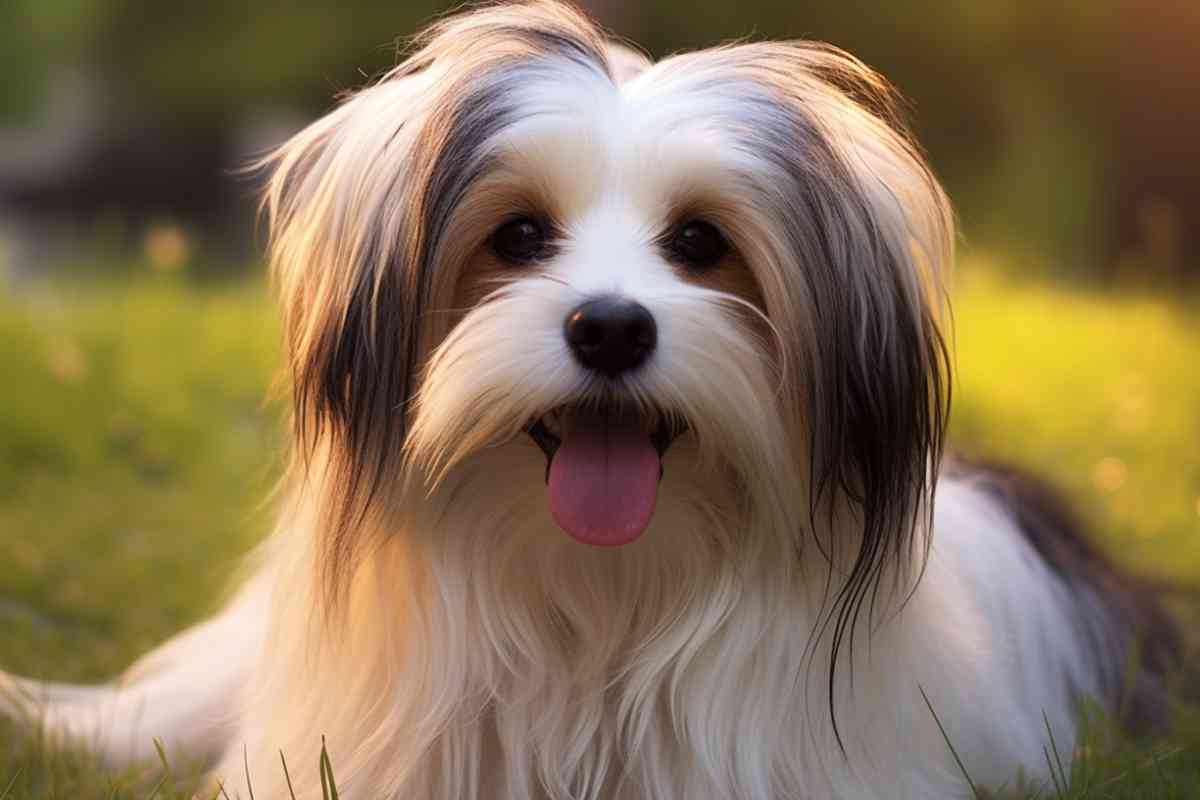
Frequently Asked Questions
What are the differences in temperament between Havanese and Goldendoodles?
Havanese dogs are known for being affectionate, playful, and social. They love to be around people and are good with children. Goldendoodles are also friendly and outgoing, but they tend to be more energetic and may require more exercise than Havanese. Both breeds are generally good with other pets and are easy to train.
How do Havanese and Goldendoodles compare in size?
Havanese are small dogs that typically weigh between 7 and 13 pounds and stand about 8 to 11 inches tall at the shoulder. Goldendoodles, on the other hand, can range in size depending on the type of poodle used in the breeding. Standard Goldendoodles can weigh up to 90 pounds and stand up to 24 inches tall, while mini Goldendoodles weigh between 15 and 35 pounds and stand up to 16 inches tall.
What are the characteristics of a Havanese Goldendoodle mix?
A Havanese Goldendoodle mix, also known as a Havapoo, is a cross between a Havanese and a Miniature Poodle. These dogs are small in size, typically weighing between 7 and 15 pounds, and are known for their affectionate and playful nature. They are intelligent and easy to train, making them great family pets.
What are the traits of a Mini Goldendoodle?
A Mini Goldendoodle is a cross between a Golden Retriever and a Miniature Poodle. These dogs are small in size, typically weighing between 15 and 35 pounds, and are known for their friendly and outgoing nature. They are intelligent and easy to train, making them great family pets. Mini Goldendoodles are also hypoallergenic, making them a good option for people with allergies.
Are Havanese or Goldendoodles considered low maintenance dogs?
Both Havanese and Goldendoodles are considered low maintenance dogs. They require regular grooming to keep their coat healthy and free of mats, but they do not shed much and are easy to care for. Havanese require more frequent grooming than Goldendoodles due to their longer coat.
What are some potential drawbacks of owning a Havanese?
One potential drawback of owning a Havanese is that they can be prone to separation anxiety and may become destructive if left alone for long periods of time. They also require regular grooming to keep their coat healthy and free of mats. Additionally, they may be prone to certain health issues such as hip dysplasia, patellar luxation, and dental problems.